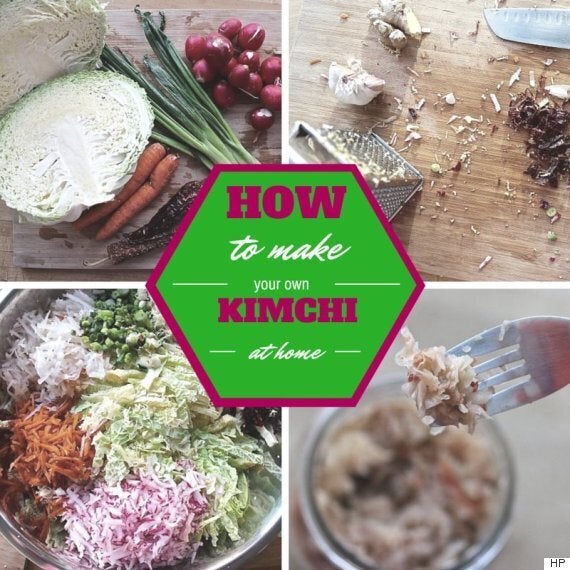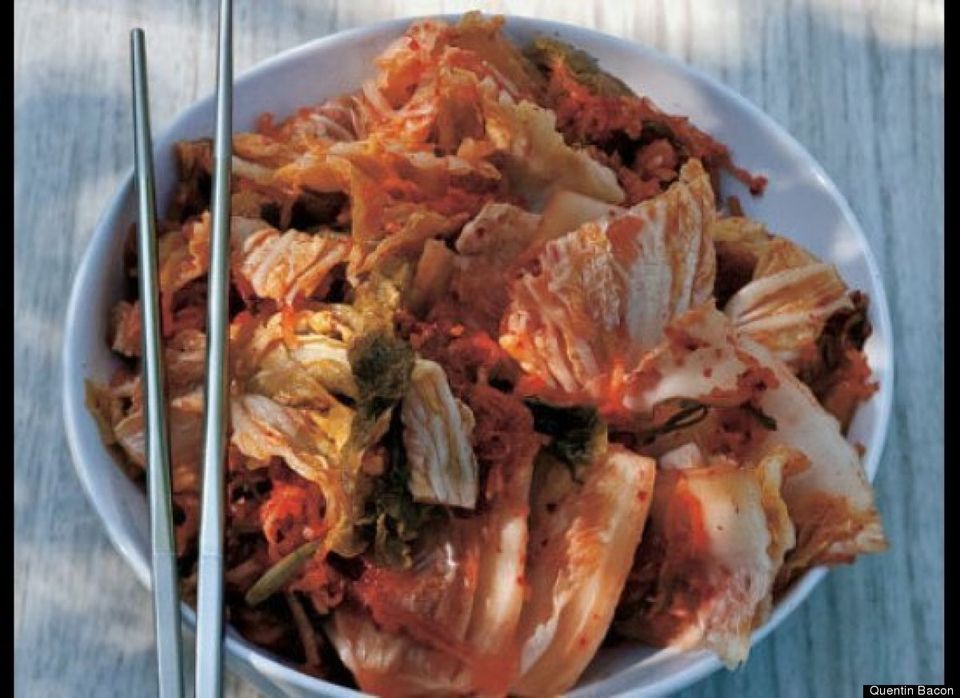
Kimchi was the final fermented food that I had been yearning to make, had tried several times, but had yet to find success...until now. I was testing out easy kimchi recipes as I will be introducing some fermented foods into the revised Culinary Nutrition Expert program. I also have a super awesome recipe to share for Kimchi Sushi Rolls and thought I best first work out how to make this elusive traditional Korean delight.
I was at my usual organic grocer, owned by a Korean family. I mentioned needing daikon for my kimchi and the women at the checkout were all excited that I was going to attempt this. I asked what their best tips were. They both giggled and told me their best tip was to buy some already made.
The art of making of traditional foods are being lost by many, while people like me and my friends at Well Preserved and Nourished Kitchen (just two of the many traditional food blogs I love) do our best to uphold a little of the goodness from "the old country" -- whatever and whose ever old country that may be. It's important. And when it comes to fermented foods, it's mighty important.
I have written often in the last year about the powerful benefits of fermented foods for our digestive health, immune health, and even brain health (which is directly connected to the health of our gut). But when I go to buy fermented foods, especially kimchi, it's hard to know exactly what's in there. So many kimchi recipes I looked at called for shrimp paste, or korean spice blends. And you know I like to know what I'm eating.
And so, in the last year, I have begun to make all of my own ferments -- whether it's coconut kefir, sauerkraut, kombucha, and now, I am proud to say, I have succeeded with kimchi.
The recipe I used was inspired by this one from my dear friend (whom I've yet to meet but any friend of Joel and Dana's is a friend of mine), Marisa of Food in Jars. I loved her version as it didn't use any pre-made spice blends or pastes.
It used only the super potent, smelly and strong ingredients to set the flavour, including daikon radish, green onion, garlic, ginger and chillies. Shazaam. That is medicinal power, not to mention a gorgeous rainbow of goodness.
It took some time to slice, dice and prep, which I did all by hand in the spirit of traditional foods but I would totally use a food processor next time around. I am all into tradition but we might as well shake what mama gave us -- or use the appliances that make for less work and mess.
I massaged the bejesus out of this mix until it got soft and juicy. Packed it into a jar, and let it sit for about five days. It started to foam at one point but I just scraped that off and let is sit a few days more until it was soft, fermented and, I gotta say, so delicious!
And so here is my super easy, almost foolproof, kimchi recipe. I say almost foolproof as you really can't give any guarantees when it comes to fermentation. Every go around is an experiment. That's just part of the fun.
Easy Kimchi
Recipe Type: Condiment
Cuisine: Traditional
Author: Meghan Telpner
Prep time: 6 hours
Total time: 6 hours
Serves: 6-8 cups
A simple approach to making traditional kimchi
Ingredients
- 1 head napa cabbage, cored and shredded (makes about 8 cups)
- 6 green onions, chopped
- 2 carrots, grated
- 1 daikon radish, grated
- 10 red radishes, grated
- 5 garlic cloves, minced
- 3 Tbsp grated ginger
- 2 Tbsp sea salt
- 3 Tbsp chilli flakes or 1 1/2 Tbsp chilli powder
Instructions
- Prep all vegetables as directed in ingredients and place in large bowl. Add salt and chilli flakes. Use a larger bowl than you think you might need, as it lends to better veggie massaging.
- Massage cabbage mix for about 10 minutes and then set aside. While resting, the salt will help the veggies to "sweat," releasing some of their water.
- Return to massage for another 10 minutes, until cabbage and other veggies are softened and a few tablespoons worth of water has been released.
- Divide the mix between two 1 gallon/1 litre mason jars.
- Press kimchi mix down, helping get out any air bubbles and ideally have some of the liquid come to the top.
- Seal jar loosely and place in a warm spot (like on top or or beside your fridge). Let sit for four to five days. If foam starts to form, you can skim that off. After about four days, taste the kimchi (with a clean fork, never double dip) and decide if you want to let it ferment longer or if you're ready to enjoy it.
- Once ready, seal the jar and store in your fridge. Will keep for 2-3 months sealed.
What are your favourite fermented foods to make from scratch? Share your resources below!
MORE ON HUFFPOST:
